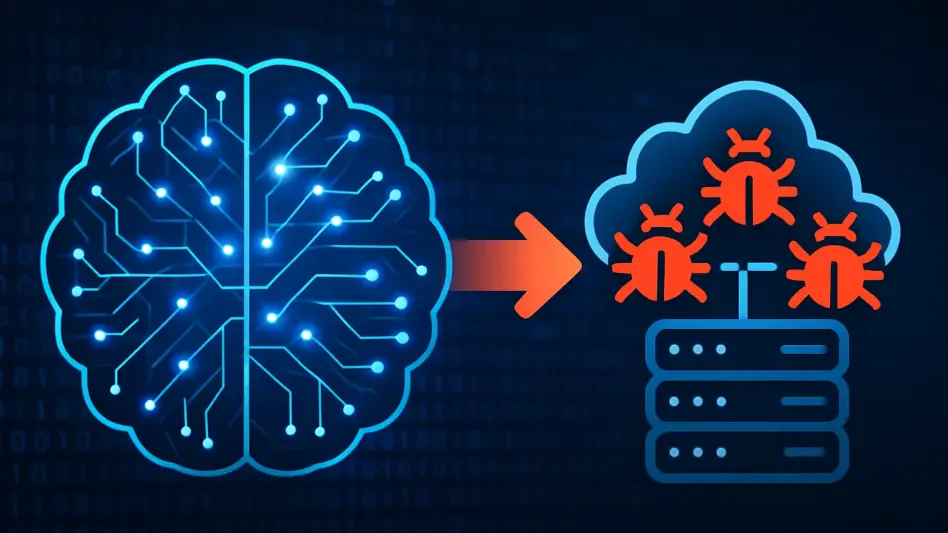In a digital landscape where cyber threats loom larger than ever, Distributed Denial-of-Service (DDoS) attacks stand out as particularly devastating, capable of crippling entire networks in moments. Picture a scenario where a major online retailer faces a sudden flood of malicious traffic on the eve of a massive sale, rendering their platform inaccessible and costing millions in lost revenue. What if such disruptions could be anticipated, allowing defenders to fortify their systems before the chaos begins? This isn’t a distant dream but the focus of pioneering research from Universiti Malaya and Universiti Teknikal Malaysia Melaka. Their work delves into how deep learning might offer early warnings for DDoS attacks by sifting through historical data to detect patterns and predict potential spikes, marking a transformative shift from merely reacting to threats to proactively countering them. This approach could redefine cybersecurity, providing a critical edge in an era of escalating digital risks.
The Power of Deep Learning in Cybersecurity
Harnessing Algorithms for Early Warnings
The cornerstone of this innovative research lies in the application of deep learning, particularly through Long Short-Term Memory (LSTM) algorithms, to analyze time-series data from past DDoS incidents. By studying a vast dataset comprising 192,525 attacks recorded between 2019 and 2021, sourced from a global repository like the Digital Attack Map, the model uncovers trends that might indicate future surges in attack volume or duration. Although it falls short of delivering precise details about the exact timing or scale of an impending strike, it provides a broad forecast of periods likely to see heightened malicious activity. This foresight enables security teams to allocate resources strategically, tweak network configurations, and enhance defenses well before an attack materializes. Such a proactive stance could significantly reduce the impact of disruptions, offering a lifeline to organizations under constant threat from increasingly sophisticated cyber adversaries.
This predictive capability represents a departure from conventional cybersecurity tactics, which often hinge on real-time detection and response. The use of LSTM algorithms allows the system to retain memory of past patterns, making it adept at recognizing subtle anomalies in data that might signal an upcoming threat. Beyond just identifying potential risks, the model’s ability to highlight probable attack windows empowers defenders to shift from a defensive crouch to a more assertive posture. Security personnel can prioritize monitoring during predicted high-risk periods, ensuring that mitigation tools are primed and ready. While the technology is still in its early stages, requiring refinement to boost accuracy, the initial results suggest a promising avenue for transforming how digital threats are managed, potentially setting a new standard for preemptive defense in the cybersecurity realm.
Overcoming Limitations in Predictive Models
Despite the exciting potential of deep learning in forecasting DDoS attacks, significant hurdles remain in achieving reliable predictions. One primary challenge is the inherent unpredictability of cybercriminal behavior, which often adapts rapidly to bypass existing defenses. The current models, while adept at spotting general trends, struggle with the granularity needed to predict specific attack characteristics, such as the precise method or target. This limitation means that while security teams might know a threat is looming, they cannot always tailor their responses with pinpoint accuracy. Addressing this gap requires ongoing advancements in algorithm design, ensuring that models can better interpret the nuanced signals buried within vast datasets and adapt to the ever-shifting tactics employed by attackers.
Another critical barrier lies in the computational demands and error margins associated with these predictive systems. Training deep learning models on extensive historical data demands substantial processing power and time, which can strain resources for many organizations. Additionally, the margin of error in current forecasts remains high, sometimes leading to false positives that could divert attention from genuine threats. To mitigate these issues, researchers are exploring ways to streamline algorithms for efficiency while enhancing their precision through iterative testing. Collaboration with technology providers to integrate these models into existing security frameworks also holds promise, potentially reducing overhead costs and improving real-time applicability. As these challenges are tackled, the vision of a predictive cybersecurity tool moves closer to practical deployment.
Challenges in Current Cybersecurity Approaches
The Rising Complexity of Attack Strategies
DDoS attacks have evolved dramatically, becoming more intricate and harder to counter as attackers blend traditional techniques with cutting-edge methods. Tactics such as total traffic overloads and UDP misuse persist, but they are now often combined with multi-vector approaches that exploit a range of vulnerabilities simultaneously. The emergence of IoT botnets, where countless connected devices are hijacked to amplify attack strength, adds another layer of difficulty. Furthermore, the proliferation of “DDoS-for-hire” services has lowered the barrier for launching such campaigns, enabling even non-technical individuals to orchestrate devastating strikes. This growing sophistication underscores the inadequacy of static defenses, which struggle to keep pace with the dynamic nature of modern cyber threats, leaving networks exposed to significant risks.
The reactive nature of most current cybersecurity tools exacerbates these challenges, as they typically activate only after an attack is underway. By the time detection occurs, considerable damage may already be inflicted, ranging from service downtime to financial losses and reputational harm. This lag in response highlights a fundamental flaw in traditional systems, which are often designed to mitigate rather than prevent. The relentless innovation by attackers, who continuously refine their methods to exploit the smallest weaknesses, demands a rethink of defense strategies. Shifting the focus toward anticipation rather than reaction is no longer optional but essential, as the cost of playing catch-up in the face of increasingly aggressive and complex DDoS campaigns continues to mount.
Gaps in Real-Time Defense Mechanisms
Current cybersecurity frameworks, predominantly built around real-time detection and mitigation, reveal critical shortcomings when facing the scale of contemporary DDoS threats. These systems are engineered to identify malicious activity as it happens, triggering responses like traffic rerouting or filtering to lessen the impact. However, this approach often means that the initial wave of an attack has already hit, disrupting operations before countermeasures kick in. For industries reliant on uninterrupted online presence, such as e-commerce or financial services, even brief outages can result in substantial losses. The inability to act preemptively leaves organizations perpetually on the back foot, unable to shield themselves from the full brunt of an assault.
Moreover, the sheer volume and diversity of modern DDoS attacks strain the capabilities of existing tools, which may not scale effectively under extreme pressure. High-volume attacks, some exceeding 1 terabit per second as seen during the sharp 94% surge between 2019 and 2021, can overwhelm even robust defenses, exposing gaps in capacity and adaptability. This period of heightened online activity underscored how reliant society has become on digital infrastructure, amplifying the consequences of any downtime. The limitations of real-time systems are further compounded by their inability to learn from past incidents in a predictive manner, missing opportunities to fortify against recurring patterns. A fundamental overhaul, integrating foresight into defense mechanisms, appears increasingly necessary to address these persistent vulnerabilities.
Building a Predictive Future for DDoS Defense
Data as the Foundation of Forecasting
The effectiveness of predictive models in countering DDoS attacks rests heavily on the availability of high-quality, comprehensive data. Historical attack records, such as those drawn from global sources like the Digital Attack Map, provide the raw material for deep learning algorithms to identify patterns and forecast future threats. However, the value of this data depends on its relevance and completeness—outdated or fragmented datasets can skew predictions, leading to unreliable outcomes. Collaboration with internet service providers and threat intelligence partners becomes vital to ensure access to current and diverse information. By pooling resources and sharing insights, the cybersecurity community can build richer datasets that enhance the accuracy of predictive tools, paving the way for more resilient digital environments.
Beyond just gathering data, the challenge lies in refining how it is processed and utilized within forecasting models. Ensuring that algorithms prioritize the most pertinent signals amidst a sea of information requires sophisticated filtering techniques and continuous updates to reflect the latest attack trends. The role of industry-wide cooperation cannot be overstated, as isolated efforts often fall short against globally coordinated threats. Initiatives to standardize data-sharing protocols could further streamline this process, enabling seamless integration into predictive systems. As these models evolve with access to robust datasets, they hold the potential to transform security operations, shifting the paradigm from a constant state of alert to one of informed anticipation, where threats are addressed before they escalate into crises.
Envisioning Integrated Security Dashboards
The ultimate goal of leveraging deep learning for DDoS prediction extends beyond standalone models—it involves embedding forecasting capabilities into everyday security dashboards. Imagine a system that not only displays current network status and active threats but also projects potential risks hours or days in advance. Such integration would empower organizations to make informed decisions about resource allocation, network adjustments, and mitigation strategies well before an attack peaks. This forward-looking approach could redefine how cybersecurity teams operate, allowing them to prioritize prevention over damage control and allocate budgets more effectively to areas of greatest vulnerability, ultimately strengthening overall network resilience.
Achieving this vision requires overcoming technical and logistical barriers, including the seamless incorporation of predictive analytics into existing infrastructure. Security vendors and organizations must work together to design interfaces that present complex forecasts in an accessible, actionable format, ensuring that even non-specialist staff can respond appropriately. Additionally, continuous refinement of prediction accuracy through real-world testing and feedback loops will be essential to build trust in these systems. Looking ahead, the potential for dashboards to serve as both monitoring and forecasting hubs signals a significant leap in cybersecurity strategy. This evolution, driven by deep learning advancements, promises to equip defenders with the tools needed to stay ahead of increasingly cunning and disruptive DDoS threats.








